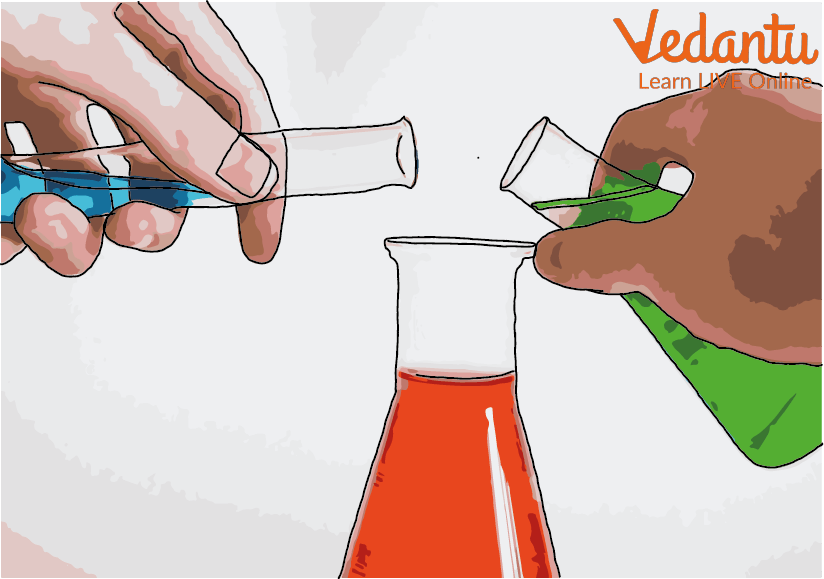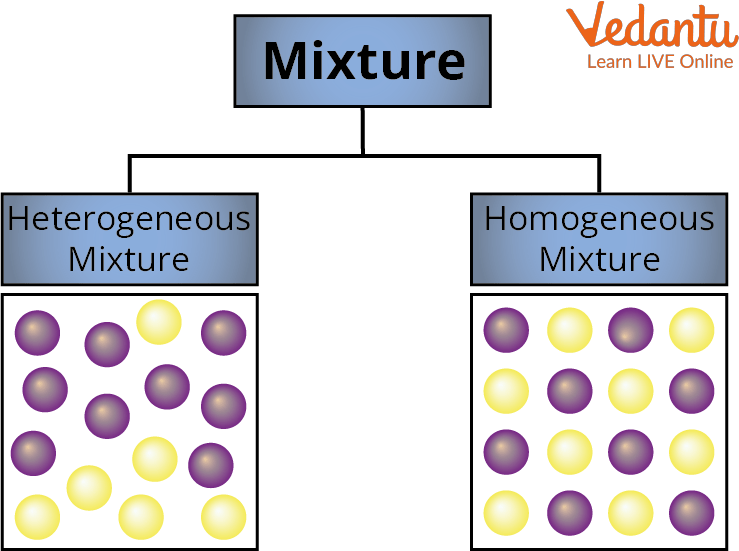




Introduction to Chemical Mixtures
Today we will learn about Chemical mixtures. The most basic example of a mixture is the air we breathe. Do you realize that? We will study a little more into the impure materials, or mixes, as they're sometimes referred to. A chemical mixture is a mixture of two more than two substances or compounds. These substances are not bonded to chemicals. The mixtures of substances are in a fixed ratio. In this article, we will study the mixture and types of the mixture (Homogeneous Mixture and Heterogeneous Mixture) with examples. We will also discuss the Solution and the difference between mixture and solution.

Chemical Mixture
What is a Mixture in Chemistry?
In chemistry, a mixture is made up of two or more two chemical substances which are not bonded or linked to chemicals. A mixture is a physical combination in the form of Solution, Suspension, and Collides. In a mixture, the compounds can be easily separated and are variable. We can separate mixtures by using mechanical methods like purification, distillation, electrolysis, chromatography, heat, filtration, and gravitational sorting. There is no change or little change of energy. In other words, a mixture is something you obtain when you combine two things, allowing you to separate them again without causing a chemical reaction.
Types of Mixture

Types of Mixture
Mixtures are classified into Homogenous Mixture and Heterogeneous Mixture
1. Homogeneous Mixture –
It is a mixture in which the substances are mixed together so well that the different parts do not settle on their own. Solid, Liquid, and Gas are homogenous mixtures. The mixing of salt and water is the best example here. Salt and water cannot be separated at this point because the path of light is invisible when a ray of light strikes a solution of salt and water. In a homogenous mixture, the size of particles is less than 1 nanometre. A mixture is said to be homogenous if its composition is constant throughout. Because the dissolved salt is evenly distributed throughout the whole salt water, the saltwater described above is homogenous.
Example: Mixture of Salt and Water.
2. Heterogeneous Mixture -
It is a mixture in which the substances are mixed together but not dissolved together. All of its particles are visible with a microscope. The parts are simple to recognize, and more than one phase is visible with the unaided eye.
Example: Mixture of oil and Water.
Examples of Mixture
1. Mixture of Wood and Water
2. Mixture of flour and butter
3. Mixture of Sugar and tea
4. Mixture of petroleum and water
5. Mixture of Copper and Silver
6. Mixture of Zinc and Copper
7. Mixture of sand and water
8. Mixture of Nickel and Iron
Difference Between Mixture and Solution
Summary
Mixtures are the one product of combining different substances, elements, and compounds. Every substance in a combination maintains its unique chemical identity and this is understandable that mixtures are the result of mechanically blending the components or complex without any chemical bonding occurring, it means that the mixture has no chemical bonding, and all the elements engaged in the mixing process retain their original chemical characteristics.
FAQs on Chemical Mixtures
1. Is Blood a mixture?
Yes, Blood is a heterogeneous mixture including the plasma, platelets, white blood cells and red blood cells. The process of pheresis(which spins the blood) can separate it into its component parts which easily illustrates its heterogeneous nature.
2. What type of mixture is steel?
(a). Alloy
(b). Suspension
(c). Solution
(d). Colloid
Correct Answer is (a).
A metal alloy is a substance that combines more than one metal or mixes a metal with other non-metallic elements. For example, brass is an alloy of two metals: copper and zinc. Steel is an alloy of a metallic element (iron) and a small amount up to 2% of a non-metallic element (carbon).
3. Why is a mixture important?
Mixtures and compounds are important combinations of elements. They are essential to the chemical processes that support living things, as well as those that occur every day in non living objects.









